FISCAL YEAR ENDING JUNE 30, 2022





The 2022 Citizens Financial Report provides citizens and other interested parties with an overview of the Town of Wake Forest’s financial results. This report is prepared to increase awareness and provide transparency about the Town’s financial operations.
The financial information provided here is obtained from the audited financial statements in the Town’s 2022 Annual Comprehensive Financial Report (ACFR) which is audited by Cherry Bekaert LLP and has received an unmodified or “clean” opinion.
The Citizen’s Financial Report is not required to present the same level of detail as the ACFR and, therefore, may not fully conform to generally accepted accounting principles (GAAP). This report is designed to provide a summary of the Town’s overall financial condition in a user-friendly format as well as serve as a supplement to the ACFR, not a replacement.

To see the report, visit the Town’s website at wakeforestnc.gov and search for “annual comprehensive financial report.” Or go directly to the report by visiting bit.ly/WFAnnualComprehensiveFinancialReport
The Town of Wake Forest’s Annual Comprehensive Financial Report (ACFR) has won the Government Finance Officers Association of the United States and Canada (GFOA) award for 32 consecutive years. For the last eight consecutive years, the Town has received the GFOA award for the Distinguished Budget Presentation. To earn these awards, the Town must produce easily readable and efficiently organized budget and financial reports, whose contents conform to program standards. Such reports must satisfy both generally accepted accounting principles and accepted legal requirements.
In addition, the Town’s Citizens Financial Report has received the award for Outstanding Achievement in Popular Annual Financial Reporting for the last five years. The award is valid for a period of one year.
To view all Town of Wake Forest financial reports, including the budget, visit the Town’s website at wakeforestnc.gov and search for “finance.”
We strive to make sure we retain that sense of character that continues to make Wake Forest the ultimate location to live, work and play.



The Town of Wake Forest is proud to present its Popular Annual Financial Report (PAFR).

On November 8, Wake Forest voters approved a $75 million bond referendum for four bond questions: Roadway and Transportation ($23,720,000), Parks & Recreation ($24,430,000), Greenway Improvements ($14,350,000), and Downtown Parking Facility ($12,500,000). This voter-approved bond funding will allow the Town to complete projects such as the north/ south greenway connection between Raleigh and Franklin County, improve road connectivity, and develop recreational amenities for our citizens.
Town staff is currently in negotiations to redevelop the property at 353 S. White Street. This redevelopment initiative will provide a mixed-use component to downtown and provide additional parking options for those who visit our downtown merchants and attend Town events.
We have completed the inaugural course of our Citizens Academy. This academy is another opportunity for the Town to showcase its operations to our residents. The attendees interact with many of the employees responsible for the great services the Town provides. We received tremendous positive feedback to the program and plan to offer it again in the fall. It is our hope that those who attend leave with a better
understanding of their local government and know who to contact when they have questions or concerns. Please be on the lookout for the next application cycle in 2023.
Our financial position continues to remain strong. This fiscal year was one of our strongest years in relation to fund balance (our reserves). Out of 552 municipalities in North Carolina, Wake Forest remains only one of less than 15 to achieve AAA ratings from three of the major credit agencies. Additionally, our auditors have finished their year-end review and reported no issues or irregularities and therefore issued a clean opinion of our finances.


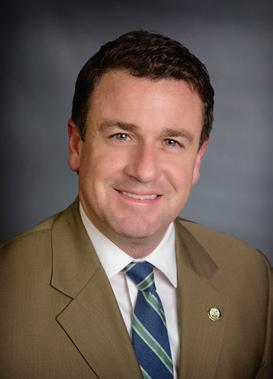
On behalf of our elected officials and staff, I want to thank you for your support of our continued efforts in Wake Forest. We strive to make sure we retain that sense of character that continues to make Wake Forest a great community.
— Kip Padgett ,As we look to the future, Wake Forest must plan for how it will continue providing services in a manner that efficiently meets the needs of our growing and ever-changing community. The strategic plan charts our course for the next five years towards providing excellent and sustainable quality of life for our citizens. Recently updated for 2022-2027, the Town’s strategic plan has five goals as follows:
Goal 1
Sustaining Excellent Town Services
Goal 2
Creating Accessible Housing Opportunities
Goal 3





Fostering a Safe, Diverse, and Welcoming Community
Goal 4
Investing in Transportation and Infrastructure
Goal 5
Advancing Community and Economic Prosperity
Our VISION
Wake Forest’s vibrant, diverse, and welcoming community fosters its distinct character, thriving economy, and high quality of life.
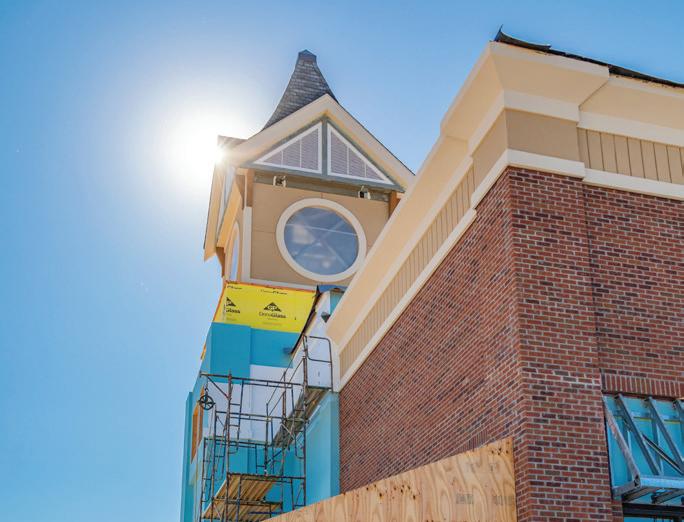
The Town of Wake Forest is committed to delivering superior services and celebrating the diversity of our organization.

Caring: Demonstrating respect, honesty, understanding, helpfulness, and positivity
Commitment: Displaying a strong sense of dedication to the organization and your fellow employees
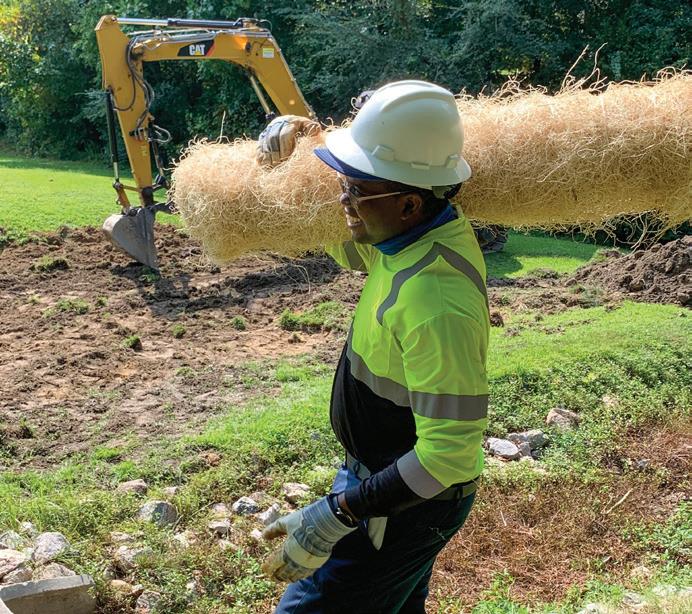





Character: Demonstrating integrity, perseverance, and ethical behavior
Collaboration: Embracing the value of teamwork and interdepartmental cooperation to achieve common goals
The Governmental activities section in the Town’s financial statements include programs generally supported by taxes, capital contributions along with grants from federal/ state governments. Governmental revenue sources cover various services including: public safety, public infrastructure, general government administration and parks, recreation and cultural resources. Governmental activities also include special revenue activities, such as grants, and capital project activities, such as greenway and transportation projects funded by bond proceeds.
The Town’s strong fiscal management remains its hallmark. Management acknowledges that 2022 goes on record as the Town’s strongest to date with fund balance increasing significantly for the second consecutive year.
Balance Sheet A balance sheet provides a snapshot of what the Town owns (assets) and owes (liabilities). Net position represents the Town’s investment in the assets it uses in providing services to its citizens.
Over time increases or decreases in net position may serve as a useful indicator of whether the Town’s financial position is improving or weakening. During FY 2021-2022, the Town’s net position increased $38,171,919.
Total governmental activity revenue increased 28.51% from prior year while expenses increased 6.90%. Increases from previous fiscal year were recognized as follows:
n Ad valorem taxes – 5.1% over previous year due to strong continued growth in our region
n Local option sales tax – 39.8% increase over prior year
Income Statement An income statement provides a summary of amounts received (revenues) and amounts spent (expenditures). The difference between revenue and expenditures shows the Town’s change in net position. A positive change indicates the Town had enough revenues to cover its obligations and has the ability to save for the future.
The General Fund is the Town’s primary operating fund. Property taxes and sales taxes are the two largest sources of revenue making up over 73% ($49,316,645) of the total received for the fiscal year. These revenues provide services to citizens and businesses within Town limits.
Public safety, which includes police and fire protection, account for 39% ($23,330,267) of the total expended. This is followed by general government at 29% ($16,896,653) which includes the governing body, administration, communications, human resources, finance, downtown development, information technology, planning, inspections, engineering, public works administration and fleet maintenance. The charts on this page show the breakdown by percentage of General Fund revenues and expenditures.
Proprietary or business type activities rely on fees charged to customers for services rendered. The Town operates Wake Forest Power and reports as the Electric Fund. It is operated in a manner
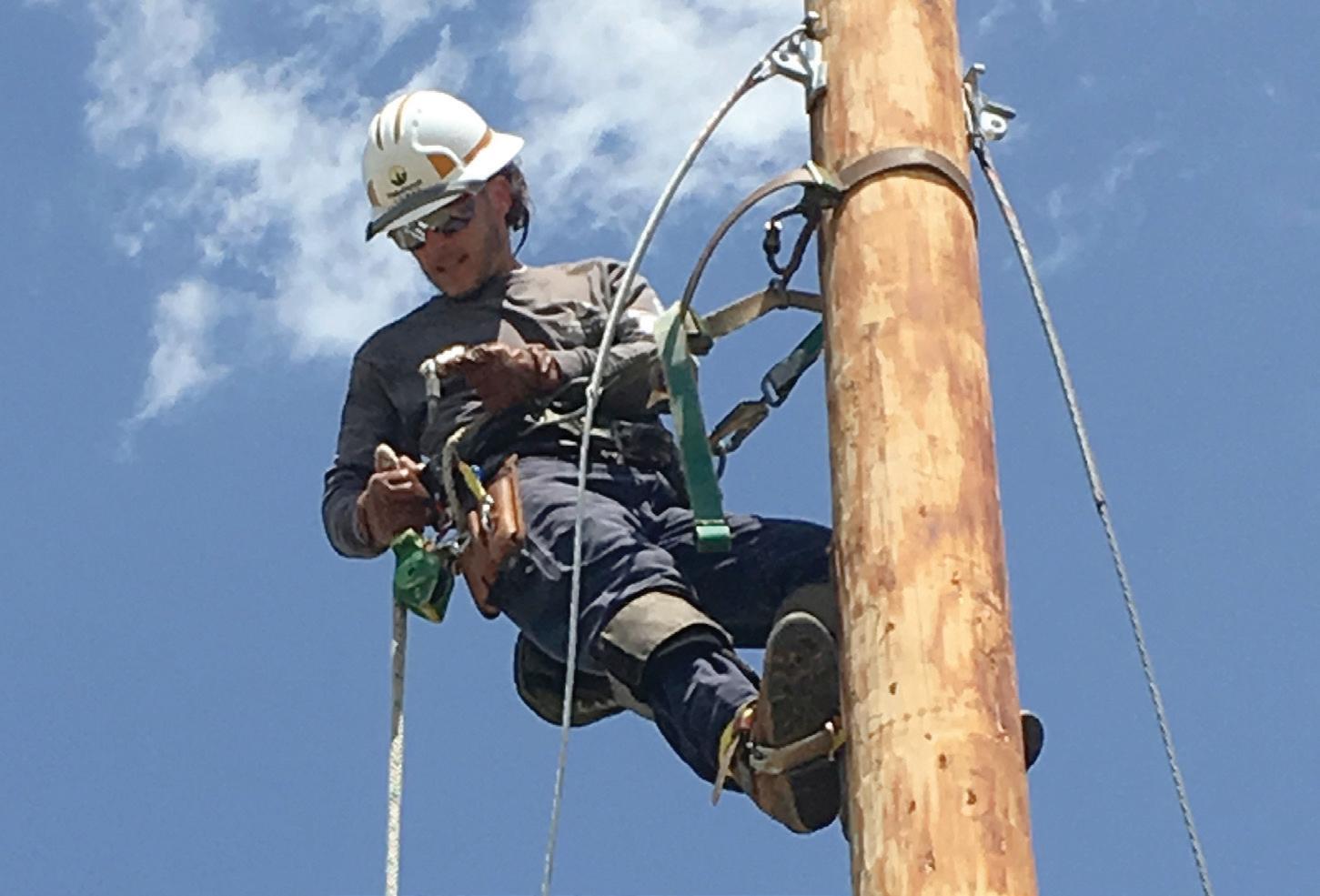

similar to private business where the costs of providing the service are financed or recovered through user charges.
Balance Sheet A balance sheet provides a snapshot of what the Town owns (assets) and owes (liabilities). Net position represents the Town’s investment in the assets it uses in providing services to its citizens.
Change in net position for business-type activities increased $29,179 for the fiscal year.
Charges for services from the sale of power increased 4.9% from the previous year. This is attributed to rate increase in September 2021 and growth in customer base.
Income Statement An income statement provides a summary of amounts received (revenues) and amounts spent (expenses). The difference between revenue and expenses shows the Town’s change in net position. A positive change indicates the Town had enough revenues to cover its obligations and has the ability to save for the future.
In recent decades, Wake Forest has transitioned from a small, rural town to a bustling suburban community. While this growth presents many opportunities, it is important to carefully plan for the rise of new development to ensure it aligns with the community’s vision and strengthens the town’s overall character. Community planning efforts seek to achieve this by carefully analyzing trends in development, housing, and placemaking, which are then translated into actionable policy.
Approved in 2022, the Community Plan establishes a road map for how Wake Forest should develop and grow over the next 10 to 20 years. The Community Plan is a product of a 21-month planning process that included considerable community engagement.

In August 2020, the Town initiated an update to the Wake Forest Community Plan to address Wake Forest’s continual growth and ensure future development supports a thriving community with a high quality of life. The planning process
included an extensive analysis of existing conditions and robust community engagement to identify issues and opportunities. Together, these components formed the vision, goals, and recommendations of the new Community Plan.
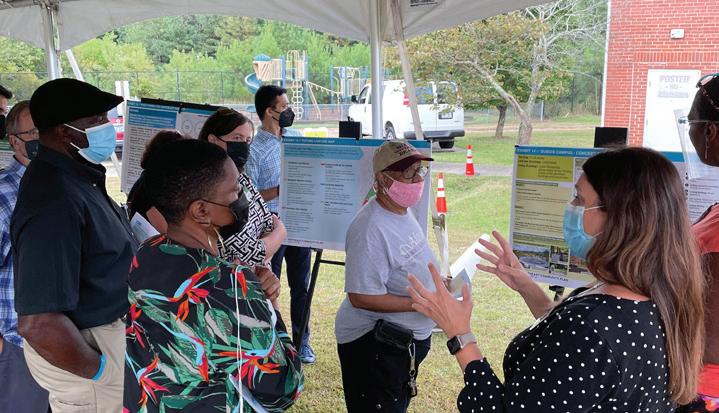
The Community Plan is built off past planning efforts, existing policies that remain relevant, and community input from a wide-ranging outreach process. It presents a cohesive vision that is representative of Wake Forest’s residents, business community, and community stakeholders. The Community Plan outlines the critical steps essential to ensure future growth and development aligns with the community’s priorities.
To see the adopted plan, visit wakeforestnc.gov and search “Community Plan.”
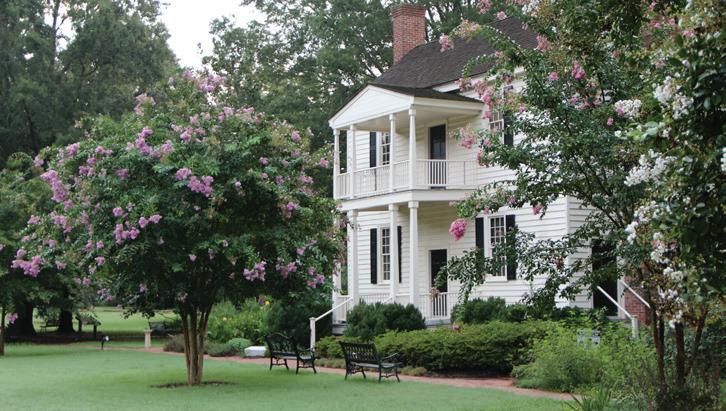
Wake Forest is situated in one of the fastestgrowing regions in the United States, leading to considerable population growth for the Town in recent decades. The large influx of new residents has substantially increased demand for both
Adopted in December 2021, the Northeast Community Plan outlines a strategy for enhancing the social, cultural and historical character of the Northeast Community by identifying needed public services, desired physical improvements within the neighborhood along with economic development opportunities that could bring services and jobs to the area.
Work on the Historic Preservation Plan kicked off in March 2022. The plan was developed over a nine-month period that included community engagement along with four overarching goals that will preserve the town’s long and rich history. The plan was adopted in October 2022.
rental and for-sale housing in the community. As a result, many seeking to locate to Wake Forest are unable to find housing that they can afford, while numerous households of existing residents are at risk of being displaced from Wake Forest and possibly the region.
In response to these challenges, the Town undertook a Housing Affordability Plan to analyze local housing conditions, determine local housing need, explore proven housing affordability strategies, and refine these strategies into practical actions for the Town. The strategies contained in the Housing Affordability Plan set the framework for how the Town can work with community partners to make thoughtful, targeted investments in housing.
Adopted in September 2022, the Housing Affordability Plan can be viewed at wakeforestnc. gov, search “Housing Affordability Plan.”
Over the past year, the Wake Forest Board of Commissioners and staff updated the strategic plan. The strategic plan is a roadmap to guide the use of money, personnel and resources to realize a shared vision of the future. It outlines what a community hopes to achieve through a long-term and annual goal-setting process and provides steps for reaching those goals.
The five goals identified in the 2022-2027 Strategic Plan are as follows: 1) Sustaining excellent town services; 2) Creating accessible housing opportunities; 3) Fostering a safe, diverse, and welcoming community; 4) Investing in transportation and infrastructure; and 5) Advancing community and economic prosperity.
The Board reviews progress of our strategic plan priorities on a quarterly basis to refine items and to ensure the plan is reflective of the changing needs of our growing community.
For more details about the Strategic Plan, visit wakeforestnc.gov and search “Strategic Plan.”
The Town continues to make strategic public investments that will spur private development. One of those investments is in the heart of downtown Wake Forest at 353 S. White St., the site of the former SunTrust building. The property spans one acre at the corner of White Street and Elm Avenue —a key intersection between the downtown historic core and Renaissance Place.
The Town intends to see the site redeveloped into a mixed-use, pedestrian-oriented project that meets both public and private goals.
The project is expected to include ground floor retail, approximately 110 apartment units, and a Town-owned parking deck to meet the growing needs in downtown Wake Forest. Bond funding will be used to cover the Town’s portion of the cost to construct the parking facility.
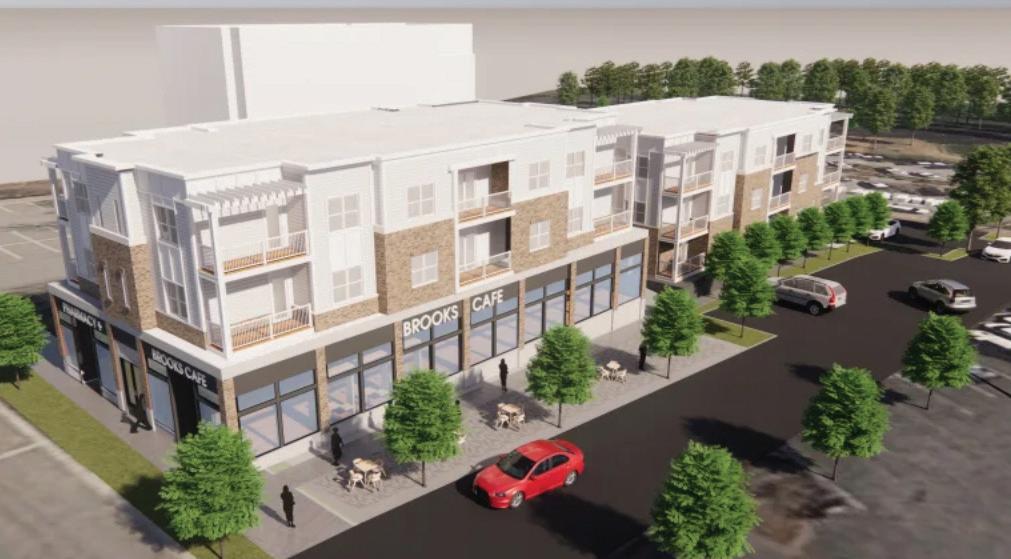

In August 2022, following a competitive solicitation process and careful developer proposal evaluation, the Town of Wake Forest
selected Triangle Real Estate Company (TREC) from Cary, NC, as the developer for the project.
To see a project overview and key milestones, visit wakeforestnc.gov and search “SunTrust site redevelopment.”
Eleven additional positions were added to meet the demands of our growing community.
The Legal Services Department was added as part of the transition to an in-house attorney and staff. Town attorney was hired in January 2022.
The Town, in partnership with Rebuilding Together of the Triangle and the Northeast Community Coalition, completed its first year of the Housing Rehabilitation Program. Repairs were made to five homes in the Northeast Community, including flooring, roof, bathroom replacements and kitchen repairs.
US Department of Transportation announced in August that $3.4 million will be used for planning of mobility hubs in Wake Forest and six other communities along the S-Line, a rail corridor between Raleigh and Petersburg, Virginia.
The Town issues debt to fund General Governmental and business-type capital needs. Total outstanding debt as of June 30, 2022 totals $43,353,370. This includes general obligation bonds (voter approved debt), revenue bonds (electric) and installment purchase agreements. Also included this year are leases as a result of the implementation of GASB 87. The chart below provides the breakdown of debt type at the end of the fiscal year.

The Town benefits from its outstanding credit ratings. A priority of the Town is to maintain public trust in the sustainability of the Town’s financial system. This commitment has resulted in the Town receiving the following credit ratings:
n Standard & Poor’s AAA
n Fitch Ratings AAA
n Moody’s Aaa
Another priority of the Town is to maximize return on Town funds. Maintaining or improving bond ratings results in lower interest rates on debt.
The Town’s total debt decreased by $4,588,907 (9.6%) during the fiscal year. Along with retiring debt during the year, the Town issued the following debt:
Installment Purchase Agreements:
n $798,510 – Vehicles and Equipment, September 2021, 3-year term, 0.89%
n $964,750 – Police Vehicles – March 2022 3-year term – 1.25%
Also, as result of the Fire Department’s merger with the Town, two outstanding Fire Department installment notes were assumed by the Town. One note was retired in 2021. The remaining Fire Department note with an outstanding balance of $350,411 was retired during the year.

The Town actively monitors and manages its debt capacity and affordability. In keeping with the goal of enhancing fiscal strength identified in the strategic plan, the Town has a formal policy which provides guidance and direction when considering the impact of future debt.
The Town utilizes a debt model to plan the issuance of future debt. At the Board of Commissioner’s annual planning retreat in January 2022, staff received approval to move forward with debt modeling and planning for a November bond referendum with projects totaling $75 million. The debt model was completed and presented in May 2022 with an estimated impact on the tax rate of up to 3 cents.
A debt service fund with specific revenues including a portion of the tax rate, vehicle fees and downtown municipal service district tax funds are earmarked to repay general fund debt.
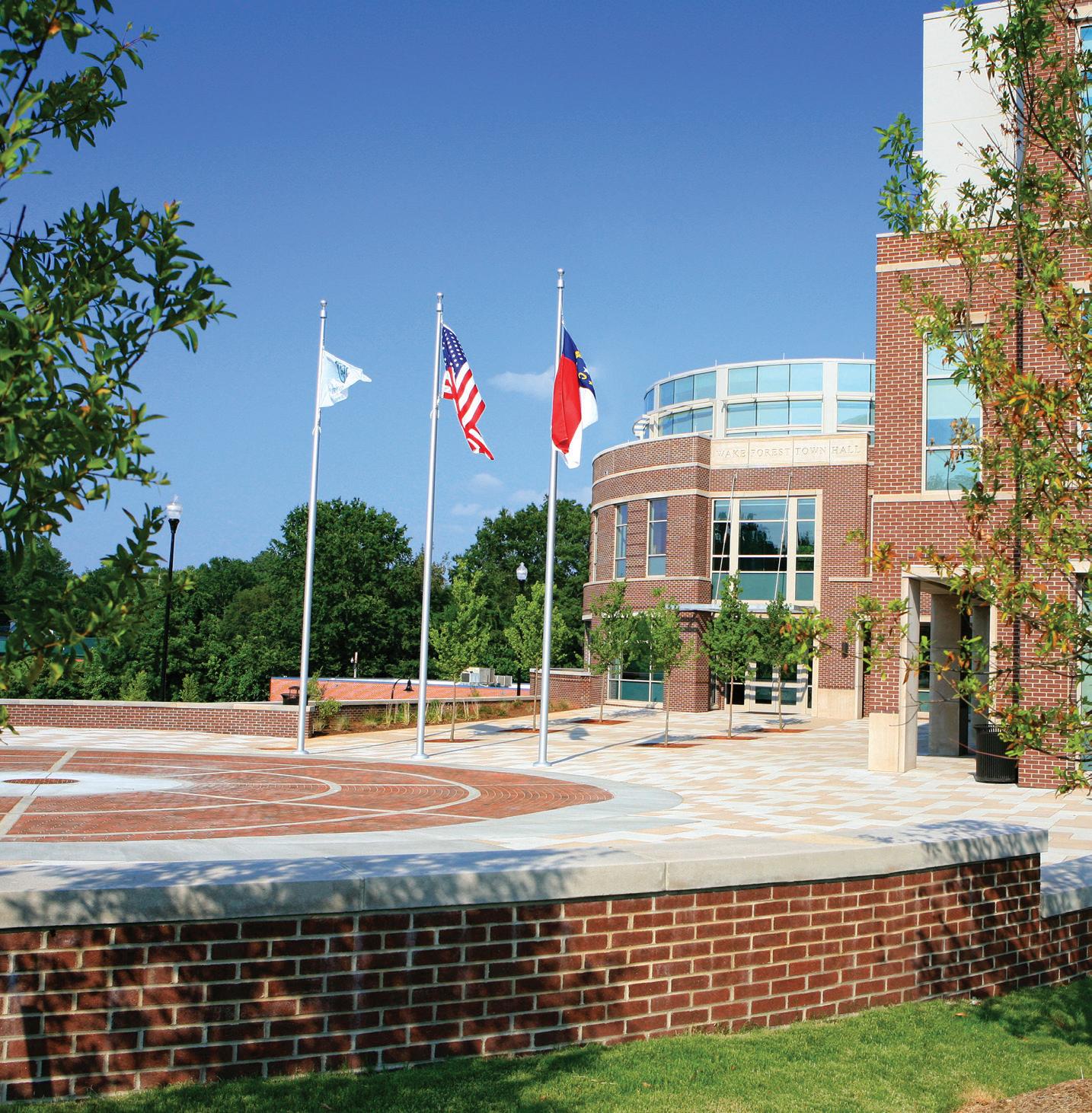
In November 2022, voters approved issuing $75,000,000 in general obligation bonds for roadway and transportation, parks and recreation facilities, greenway improvements and parking facilities. The Town plans to issue these bonds in three installments over the next seven years with the planned issuances tentatively scheduled for 2024, 2026 and 2028 or 2029.
During FY 2022-2023, the Town plans to issue $1,023,000 in installment debt to purchase replacement vehicles and equipment for the Police, Fire, Public Works, Engineering and Planning departments.
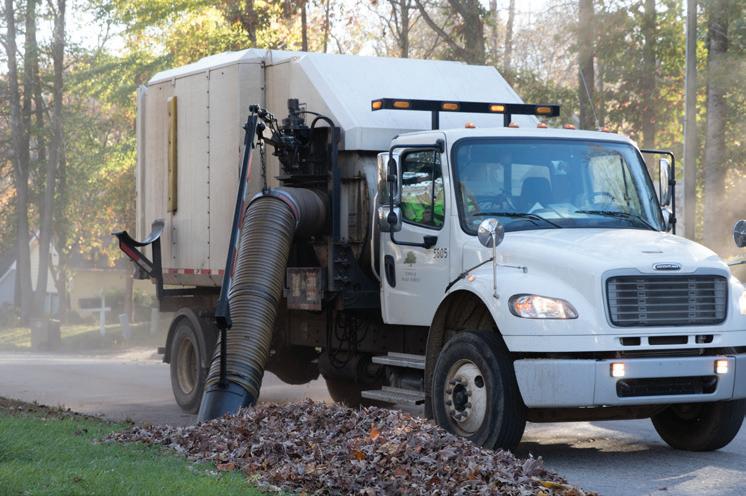
The budget represents the fundamental philosophy of being conservative with revenue projections and maintaining fiscal constraint on the expenditure side.
Much like an average household, the Town uses a balanced budget to ensure that it maintains a healthy financial position. North Carolina law requires local governments to approve a balanced budget each year. The Town plans for its financial needs of the future by utilizing a five-year capital improvements plan that is updated annually, financial forecasting, debt models, various other studies and plans.
The Town’s tax rate will remain unchanged at $0.495 for the coming fiscal year.
Governmental Activities: The 2022-2023 Adopted Budget increased 1.5% from the 2021-2022 Amended Budget, this also increased 8% over the 2021-2022 Adopted Budget. The foundation of this budget is the updated strategic plan as approved by the Board of Commissioners in June 2022. The budget endeavors to achieve the five key goals in the strategic plan by maintaining excellent Town services, creating accessible housing opportunities, fostering a safe, diverse, and welcoming community, investing in transportation and infrastructure, and advancing community and economic prosperity. Performance pay (merit), market adjustments and career ladder funds for eligible departments were included. In addition, across the board increases were granted to all full-time and part-time employees effective July 1. Twelve (12) new full-time positions were included in the approved budget.
The Town’s tax rate remains unchanged at $0.495 for the coming fiscal year. The rate is inclusive of $0.015 for transportation initiatives and $0.005 for
affordable and workforce housing. The final budget for the General Fund totaled $65.8 million and the final budget for debt service totaled $7.2 million. In addition, the Downtown Municipal Service District tax rate remains unchanged at $0.14. The vehicle fee was increased $5 (from $25 to $30) to fund the crew added in the Streets Division. Despite the appearance of renewed fiscal growth and other positive changes in economic conditions, the Town continues to focus on financial sustainability. The budget represents the fundamental philosophy of being conservative with revenue projections and maintaining fiscal constraint on the expenditure side.
Decision-making will still require much care and prudence as we continue to focus on providing the core services our citizens expect. Prioritizing how our resources are utilized is critical as we make long term plans for capital investments, as well as addressing future debt service and additional upcoming legislative mandates.
Business–type Activities: Utility rates remained unchanged in the Electric Fund with the 2022-2023 Adopted Budget. The total adopted budget is $24.3 million for the Electric Fund.
6,721
